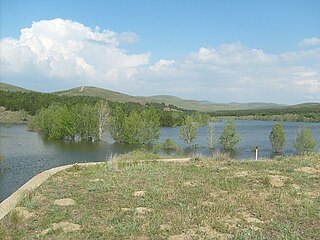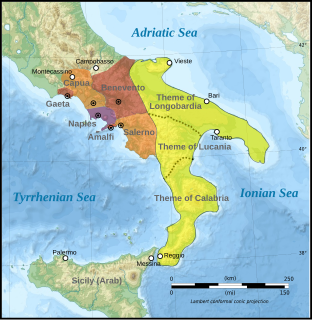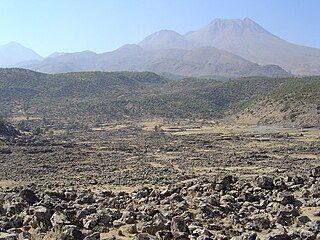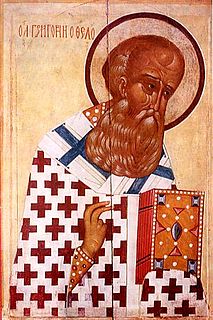 W
WAndrona, also known as al-Andarin, is a Byzantine site spread over a vast area at the edges of the semi-desert, about 25 kilometers beyond the more well-known Byzantine site of Qasr Ibn Wardan.
 W
WAthrun is a small town in northern Libya about 40 kilometres east of Cyrene. Its name comes from Greek "Ἐρυθρόν" (Erythron), neuter of "ἐρυθρός" (erythros) "red", due to the color of the local soil. Athrun was established during the rule of the Byzantine Empire in this area.
 W
WBasilica Therma is an ancient Roman spa town located in the Yozgat province of Turkey.
 W
WCinna or Kinna was a town of ancient Galatia. It was also the seat of a bishop; no longer a residential see, it remains a titular see of the Roman Catholic Church.
 W
WThe Diocese of Asia was a diocese of the later Roman Empire, incorporating the provinces of western Asia Minor and the islands of the eastern Aegean Sea. The diocese was established after the reforms of Diocletian, was subordinate to the Praetorian prefecture of the East, and was abolished during the reforms of Justinian I in 535.
 W
WThe Diocese of Macedonia was a diocese of the later Roman Empire, forming part of the praetorian prefecture of Illyricum. Its administrative centre was Thessaloniki.
 W
WThe Diocese of Pontus was a diocese of the later Roman Empire, incorporating the provinces of northern and northeastern Asia Minor up to the border with the Sassanid Empire in Armenia. The diocese was established after the reforms of Diocletian, and its vicarius, headquartered at Amaseia, was subordinate to the Praetorian prefecture of the East. Its military forces, facing the Sassanid threat, were commanded by the dux Ponti et Armeniae until the middle of the 5th century, and by two separate duces afterwards, until Justinian I instituted a new magister militum per Armeniam for the Armenian frontier. Justinian's reforms also abolished the diocese in 535, and its vicar was made into the governor of Galatia I. The results however were not satisfactory, and the diocese was reestablished in 548, continuing to function until replaced by the themata of Armeniakon and Opsikion in the later 7th century. On the north east shore of the Black Sea, the cities Nitike, Pitiyus, and Dioscurias were part of the diocese until the 7th century. The diocese included 12 provinces: Bithynia, Honorias, Paphlagonia, Helenopontus, Pontus Polemoniacus, Galatia I and Galatia II (Salutaris), Cappadocia I and Cappadocia II, Armenia I, Armenia II, Armenia Maior and the autonomous Armenian principalities (Satrapiae) in the area of Sophene. In 536, Armenia III and Armenia IV were created.
 W
WThe Diocese of Thrace was a diocese of the later Roman Empire, incorporating the provinces of the eastern Balkan Peninsula. Philippopolis was the capital.
 W
WDocimium, Docimia or Docimeium was an ancient city of Phrygia, Asia Minor where there were famous marble quarries.
 W
WThe Harbour of Eleutherios, originally known as the Harbour of Theodosius was one of the ports of ancient Constantinople, the capital of the Byzantine Empire, located beneath the modern Yenikapi neighbourhood of Istanbul, Turkey. It was built at the mouth of the Lycus watercourse that ran through the city to the Propontis.
 W
WEpiphania or Epiphaneia was a city in Cilicia Secunda, in Anatolia.
 W
WGerma or Germokoloneia was an ancient and Byzantine city in the Roman province of Galatia Secunda. The Byzantine writer Theophanes informs us that at a later period Germa took the name of Myriangeli. The few archaeological remains lie close to present-day Babadat in Eskişehir Province, Turkey.
 W
WHeraclea Cybistra, or simply Heraclea or Herakleia (Ἡράκλεια), also transliterated as Heracleia, was a town of ancient Cappadocia or Cilicia; located near modern Ereğli in Konya Province, Turkey. It had some importance in Hellenistic times owing to its position near the point where the road to the Cilician Gates enters the hills. It lay in the way of armies and was more than once sacked by the Arab invaders of Asia Minor.
 W
WHermocapelia or Hermokapeleia, also possibly known as Thyessos, was a town of ancient Lydia. It was inhabited from Classical through Byzantine times. It stood on the Hermus River, "to the west of Apollonis in its own little plain almost completely surrounded by mountains."
 W
WIotape, Iotapa or Jotape was a small town of ancient Cilicia, in the district called Selenitis, not far from Selinus. It was later assigned to Isauria where it was the seat of a bishop; no longer the seat of a residential bishop, it remains under the name Iotapa in Isauria a titular see of the Roman Catholic Church. It minted coins dating to the emperors Philip and Valerian.
 W
WIsaura Nea, in Latin Isaura Nova, both meaning 'New Isaura', was a town of the Roman and Byzantine era, so called in juxtaposition with the settlement of Isaura Palaea. It also bore the name Leontopolis, and in later days was included in the province of Lycaonia.
 W
WIsaura Palaea, in Latin Isaura Vetus, both meaning 'Old Isaura', and perhaps identical to Isauropolis, was a Roman and Byzantine era town in southern Turkey. The city has been identified with modern Zengibar Kalesi near Konya.
 W
WJustinianopolis was a Roman and Byzantine era city and ancient Bishopric in Galatia. It has been identified with modern Sivrihisar, Eskişehir Province Central Anatolia, Turkey. It was one of several Ancient sites renamed in late Antiquity after Byzantine emperor Justinian I.
 W
WA katepanikion was a Byzantine term for an area under the control of a katepano. It was used to describe two different types of administrative divisions:From ca. 971 until the late 11th century, it referred to large circumscriptions comprising several themes and commanded by a doux ("duke") or katepano ("catepan"). In English, the divisions are usually termed "duchy" or "catepanate" (katepanikion). In the Palaiologan period, the katepanikion became a much smaller province comprising a fortified town and its surroundings or an island, under a kephale and also termed a kephalatikion.
 W
WKorasion, also called Kalon Korakesion, was a town of ancient Cilicia, on the coast a little to the east of Seleucia ad Calycadnum, inhabited during the Roman and Byzantine eras.
 W
WLaodicea Combusta or Laodicea, and later known as Claudiolaodicea, was a Hellenistic city in central Anatolia, in the region of Pisidia; its site is currently occupied by Ladik, Konya Province, in Central Anatolia, Turkey.
 W
WLucania was a Byzantine province (theme) in southern Italy that was probably established c. 968, under Emperor Nikephoros II Phokas.
 W
WMesotymolus was an ancient Roman and Byzantine-era city on the Hermus River in ancient Lydia.
 W
WMokissos or Mokisos or Mokison (Μωκισόν) was a town of ancient Cappadocia. The Romans called the city Mocisus or Mocissus, and Mocisum, and after the city was rebuilt by the Byzantine Emperor Justinian (527-565), it was renamed Justinianopolis (Ἰουστινιανούπολις). Justinian made Mocisus the capital of the province of Cappadocia Tertia, and elevated its bishopric to the rank of ecclesiastical metropolis, with an eparchia that stretched south of the Halys River, the longest river of Asia Minor. The name Justinianopolis was retained until the end of Byzantine rule. Stephanus of Byzantium calls the town Moukissos (Μούκισσος). In the Synecdemus, the name appears as Rhegemoukisos (Ῥεγεμουκισός) and Rhegekoukisos (Ῥεγεκουκισός), the later evidently an error.
 W
WMostene (Μοστήνη), also called Mosteni or Mostenoi (Μοστηνοί), or Mostina (Μόστινα), or Mustene or Moustene (Μουστήνη), is a Roman and Byzantine era city in the Hyrcanian plain of ancient Lydia. The town minted its own coin of which many examples exist today. In 17 CE the city was hit by an earthquake and was assisted with relief from Tiberius.
 W
WNazianzus or Nazianzos, also known as Nandianulus, was a small town of ancient Cappadocia, and in the late Roman province of Cappadocia Tertia, located 24 Roman miles to the southeast of Archelais. In the Jerusalem Itinerary it is miswritten as Nathiangus.
 W
WPerateia was the overseas territory of the Empire of Trebizond, comprising the Crimean cities of Cherson, Kerch and their hinterlands. The territory was probably administered during Byzantine rule from Trebizond before the Comneni established a separate empire a few weeks before the Crusader sack of Constantinople in 1204.
 W
WPogla was a town in the late Roman province of Pamphylia Secunda. Its bishopric, which was a suffragan of Perge, is included in the Catholic Church's list of titular sees.
 W
WSala or Salena was a town of ancient Lydia, and is a suppressed, vacant and titular see of the Roman Catholic Church.
 W
WSyria I or Syria Prima was a Byzantine province, formed c. 415 out of Syria Coele. The province survived until the Muslim conquest of Syria in the 630s.
 W
WTabala, is the name of a Roman and Byzantine town and a Bishopric in ancient Lydia. Tabala was on the Hermus River, and minted its own coins. It is no doubt the same as the one mentioned by Hierocles under the name of Gabala, which is perhaps only miswritten for Tabala. It is even possible that it may be the town of Tabae or Tabai (Τάβαι), which Stephanus of Byzantium assigns to Lydia.
 W
WTemenothyra, or Temenothyrae or Temenothyrai, was a town of ancient Lydia, or of Phrygia, inhabited during Roman and Byzantine times. It became a bishopric; no longer the seat of a residential bishop, under the name Temenothyrae it remains a titular see of the Roman Catholic Church.
 W
WThe Theme of Cyprus was a Byzantine military-civilian province, located in the island of Cyprus, established in the 960s after the reconquest of Cyprus by the Byzantine navy. Prior to this the island had been a Byzantine-Arab condominium for three centuries, except occasional short periods where it was occupied by either power. A rebellion by governor Theophilos Erotikos in 1042, and another in 1092 by Rhapsomates, failed as they were quickly subdued by imperial forces. At the end of the 12th century there were again separatist tendencies in Cyprus: Isaac Komnenos of Cyprus proclaimed himself as "basileus" (emperor) in 1185. Cyprus remained under his command until its conquest in 1191 during the Third Crusade by Richard I of England, who sold it to the Knights Templars.
 W
WTracula is a former Ancient city and bishopric in Asia Minor, which remains a Latin Catholic titular see.